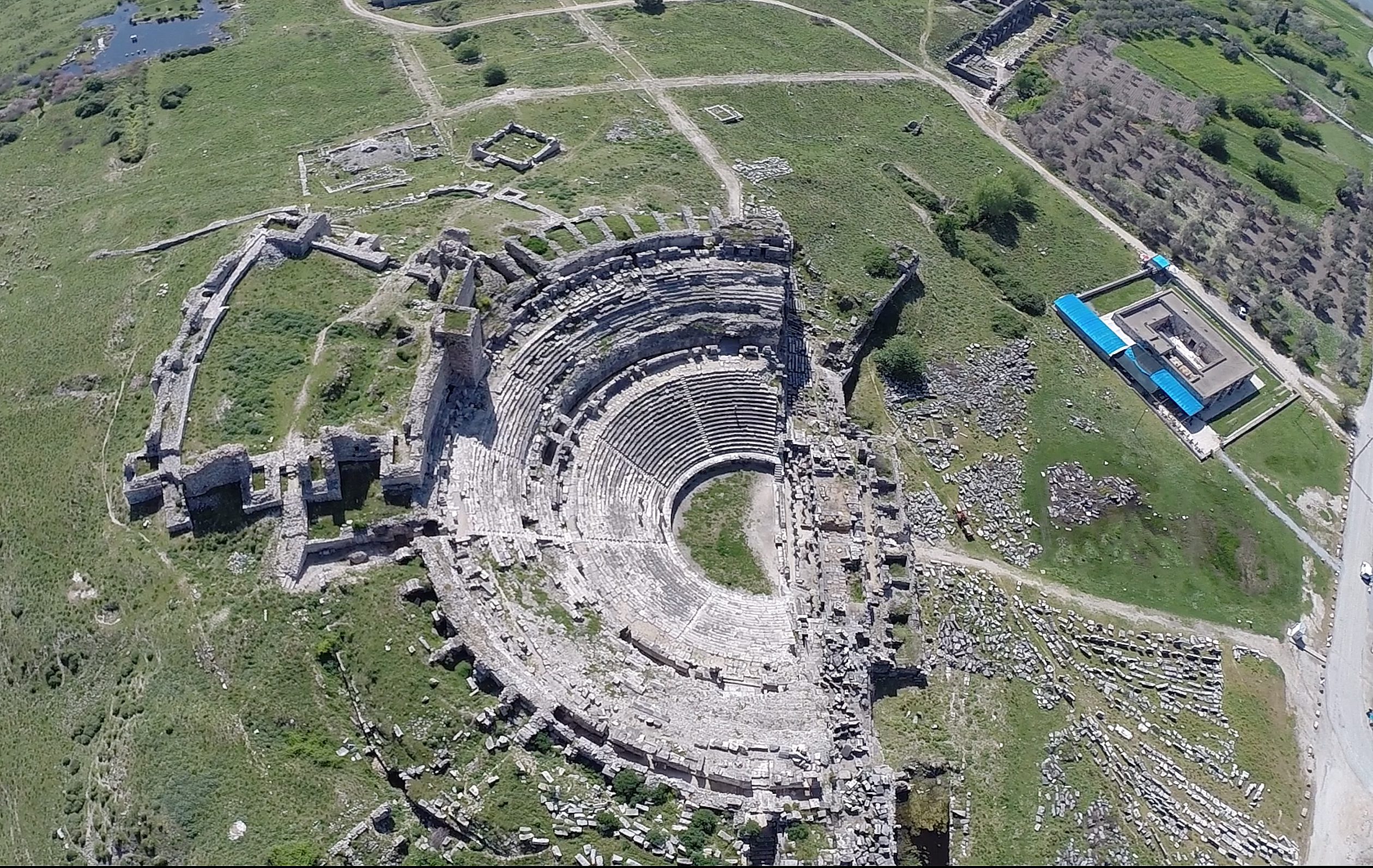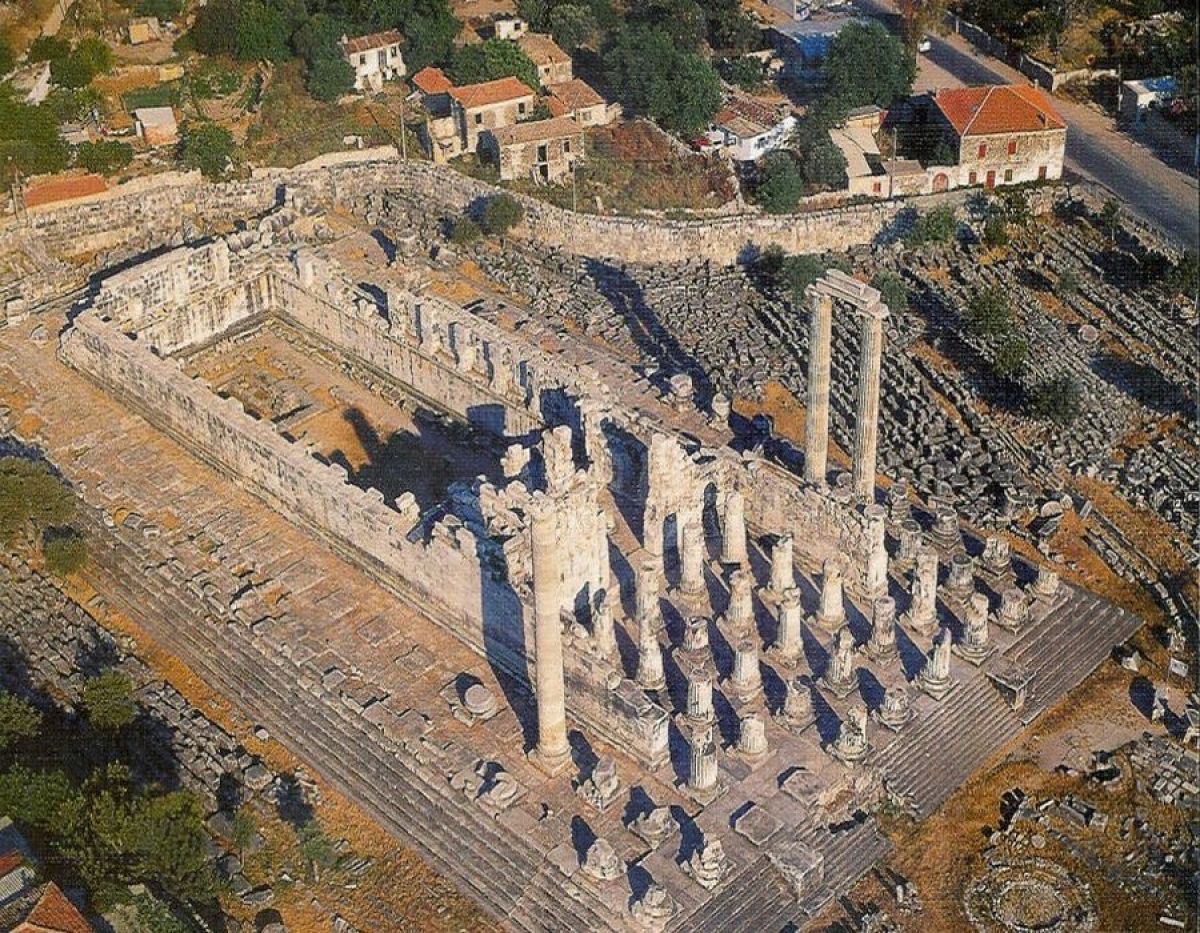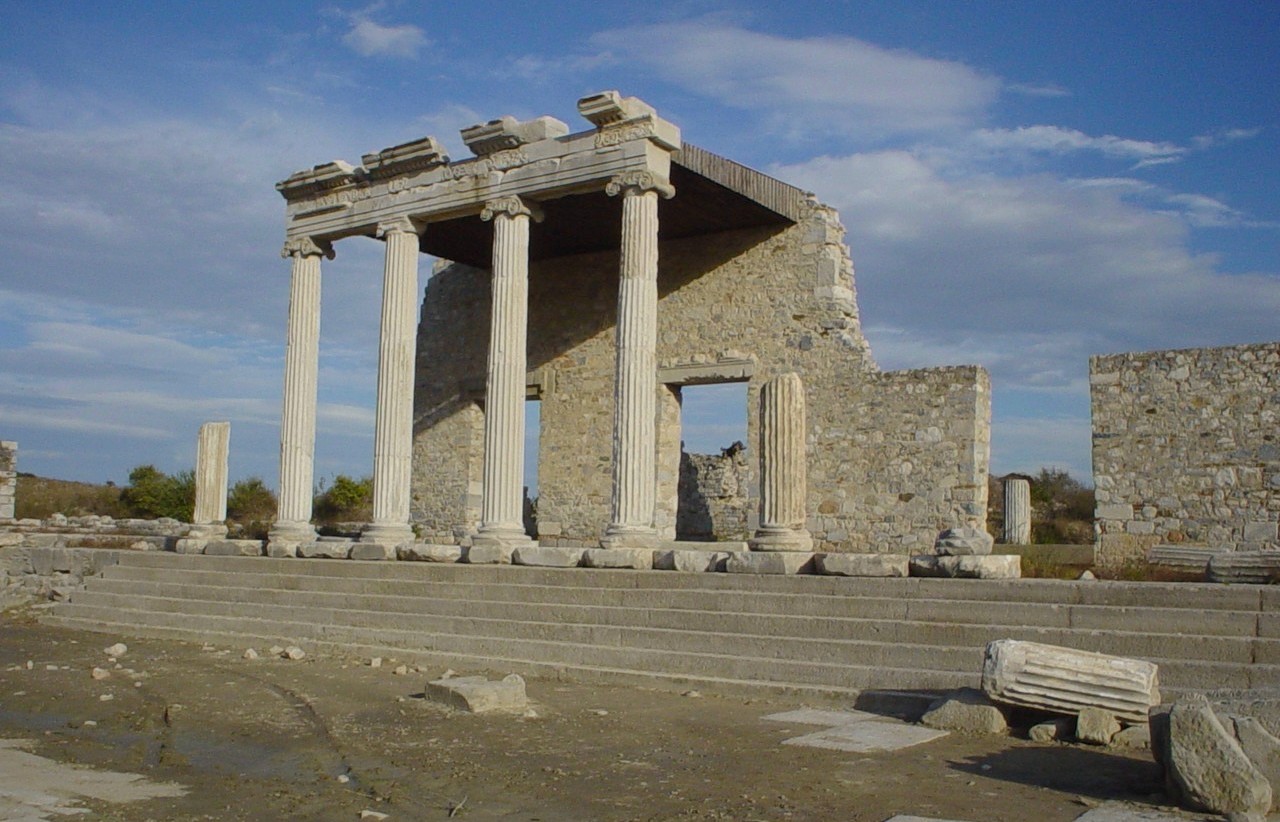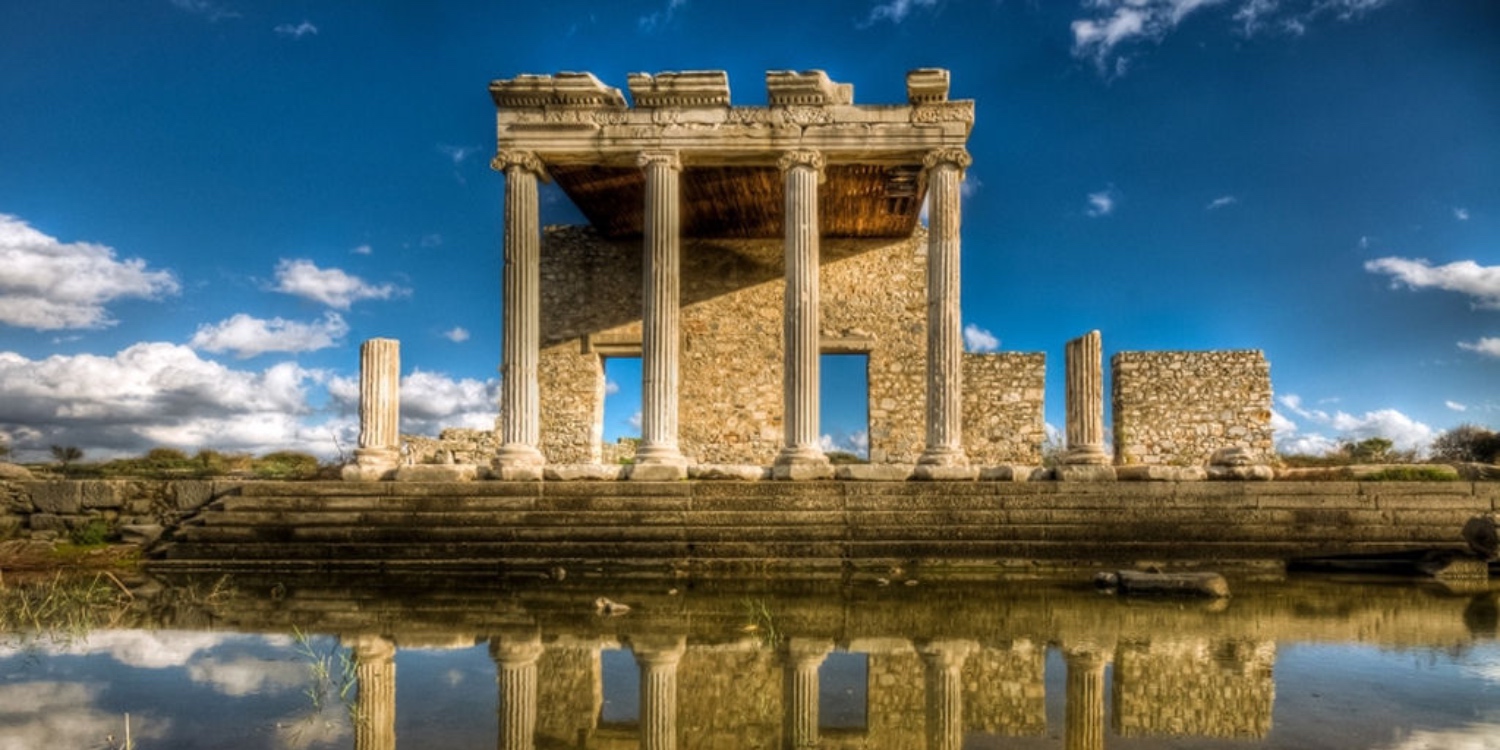Have you ever wondered what it would feel like to walk on the very ground where Western philosophy was born? To travel back in time to a place that is not just made of stones and columns, but where the first seeds of today's scientific thought were sown? If your holiday plans include not just sea, sand, and sun, but also a deep, meaningful quest that will touch your soul, then the Ancient City of Miletus in Aydın's Didim district is calling your name. In this article, we will offer you much more than a list of Things to Do in the Ancient City of Miletus; we promise you a time machine. Because Miletus, thanks to its strategic location, was known as one of the most important port cities of its time, and this wealth made it not just a center of trade, but a center of ideas.
Climb the Steps of its Massive 15,000-Seat Theater and Watch the View

When you step into Miletus, the first thing that will greet you is the massive theater, seemingly carved into the side of a mountain. Originally built in the 4th century BC during the Hellenistic period, this structure reached its monumental form with additions made during the Roman era. With a capacity of 15,000 people, it is one of the most impressive theaters of the ancient world. This number alone instantly gives you an idea of the population and importance of Miletus during the Roman Empire.
We strongly recommend that you climb to the very top steps. Yes, it might be a bit tiring, but the view you'll encounter and the historical depth you'll feel will be worth every bit of the effort. Close your eyes for a moment and imagine the applause of those 15,000 people, the excitement of a play, or perhaps the thrill created by an important political announcement.
But the real magic of those top steps is how they tell you the fate of Miletus in a single glance. Ancient sources say that all four of the city's harbors could be seen from the upper tiers of the theater. Today, however, instead of the deep blue Aegean waters, you see a vast, fertile plain formed by the alluvium carried by the Büyük Menderes (Maeander) River over thousands of years. It is at that very point that you understand how the river that gave life to Miletus also cut it off from the sea by filling its harbors. Those bustling ports where ships once docked now lie sleeping under a silent layer of earth.
Tour the Ruins of the Faustina Baths and the Monumental Fountain

After the grandeur of the theater, turn your route towards the heart of Roman social life, the Faustina Baths. These structures were not just places for bathing, but also the most important social centers of the city, where Romans gathered to chat, make business deals, and share the day's gossip. Built in the 2nd century AD, these baths are named after Empress Faustina, the wife of Emperor Marcus Aurelius—a testament to Miletus's importance in the eyes of the empire.
As you wander through the bath's large courtyard, the palaestra (an area used for athletic exercises), picture the Romans who once exercised here. Stand by the edge of the large pool and imagine the statues that once adorned it. The originals of the statues depicting the river god Maeanderos and lions are now displayed in the nearby Miletus Museum, while the statues of the Muses await visitors at the Istanbul Archaeology Museums.
Near the bath complex, you will see the Nymphaeum, the monumental fountain, another symbol of the city's wealth and engineering prowess. This three-story marble structure, adorned with statues, not only met the public's water needs but also symbolized the power and prestige of Miletus. These structures are like windows opening onto the comfortable and luxurious urban life of Miletus during the Roman period.
Imagine the Paths Walked by Great Thinkers Like the Philosopher Thales

Now we come to the magical moment that sets Miletus apart from all other ancient cities. The ground beneath your feet is the cradle not just of a city, but of a revolution in thought. Thinkers like Thales, Anaximander, and Anaximenes, who lived here in the 6th and 7th centuries BC, are the founders of the philosophical movement known as the Milesian School. What they did was simple, yet its consequences were powerful enough to change the world: instead of answering the question Why is the universe the way it is? with gods and myths, they sought logical and rational explanations by observing nature.
For example, Thales, considered the father of philosophy, proposed that water was the fundamental element of everything. This idea might seem simple to us today, but the real point was not the water itself, but the idea that the universe was based on a single, understandable, observable substance. This was the first step from mythology to science, and it was the spark that started it all.
This rational spirit of Miletus manifested itself not only in philosophy but also in urban planning. When the city was rebuilt in the 5th century BC after being destroyed by the Persians, the Milesian architect Hippodamus applied the first grid plan in history. Streets intersecting at right angles and regular city blocks... This was not just a practical solution; it was the reflection in stone of a civilization that sought to understand the universe with logic, building its own city on logic and order. As you walk through the Agora (city square), along the Sacred Way, or in the Bouleuterion (senate house), take a moment to imagine that these great thinkers walked right here, debated, and asked the questions that changed the world. It is in these moments that the true spirit of Miletus will whisper to you.
While You're in Miletus, Don't Miss These Beauties
If you still have energy after your journey through the philosophy-filled streets of Miletus, this corner of the Aegean offers you a variety of beautiful alternatives.
Priene Ancient City: If you want to see the rational spirit of Miletus in its purest form, head to Priene. This city, built like a terrace on the slopes of Mount Samsun (Mycale), is one of the best-preserved examples of Hippodamus's grid plan and is known as the Pompeii of Anatolia. For more on the captivating atmosphere of Priene, check out our Priene Ancient City travel guide.
Temple of Apollo at Didyma: If Miletus was the center of reason, Didyma was the center of spirit and prophecy. Connected to Miletus by a Sacred Way, this temple was one of the largest and most important oracle centers of the ancient world. It will mesmerize you at first sight with its colossal columns and the famous Medusa relief.
Lake Bafa & Herakleia: For a break that blends history with nature, take refuge in the mystical landscape of Lake Bafa. Just like Miletus, this lake was once a gulf of the Aegean. On its shores, the ruins of the ancient city of Herakleia and the sanctuary of Endymion, the shepherd who, according to legend, was loved by the moon goddess Selene, await you. This route is also an indispensable part of our Aegean Region Travel Routeslist.
Frequently Asked Questions (FAQ)
How can I get to Miletus Ancient City? Miletus is located in Balat Village in the Didim district of Aydın. You can easily reach it with your private car by following the Güllübahçe sign from the Söke-Milas road. Additionally, the number 273 municipal buses or the Balat Birlik minibuses departing from the center of Didim provide direct transportation to the ancient city.
What is the entrance fee and what are the visiting hours for Miletus Ancient City in 2024? For 2024, the entrance fee for the ticket covering both Miletus Ancient City and the Miletus Museum is 130 TL. If you have a Müzekart (Museum Card), you can enter for free. Visiting hours are generally from 08:00 to 19:00 during the summer period (April 1 - October 1) and from 08:30 to 17:30 during the winter period. However, it is a good idea to check the current hours before you go.
How much time should I set aside for a visit to Miletus? We recommend setting aside at least 2-3 hours to comfortably explore the ancient city, climb the theater, and see the main structures like the Faustina Baths. If you also plan to visit the Miletus Museum in detail, you might want to extend this time a bit.
Bibliography In this article, we took a journey into the soul of Miletus. For more in-depth academic and official information, you can review the resources of the Republic of Turkey Ministry of Culture and Tourism regarding the Miletus Ruins: ((https://muze.gov.tr/muze-detay?SectionId=MLT01&DistId=MLT)).


 English
English Türkçe
Türkçe